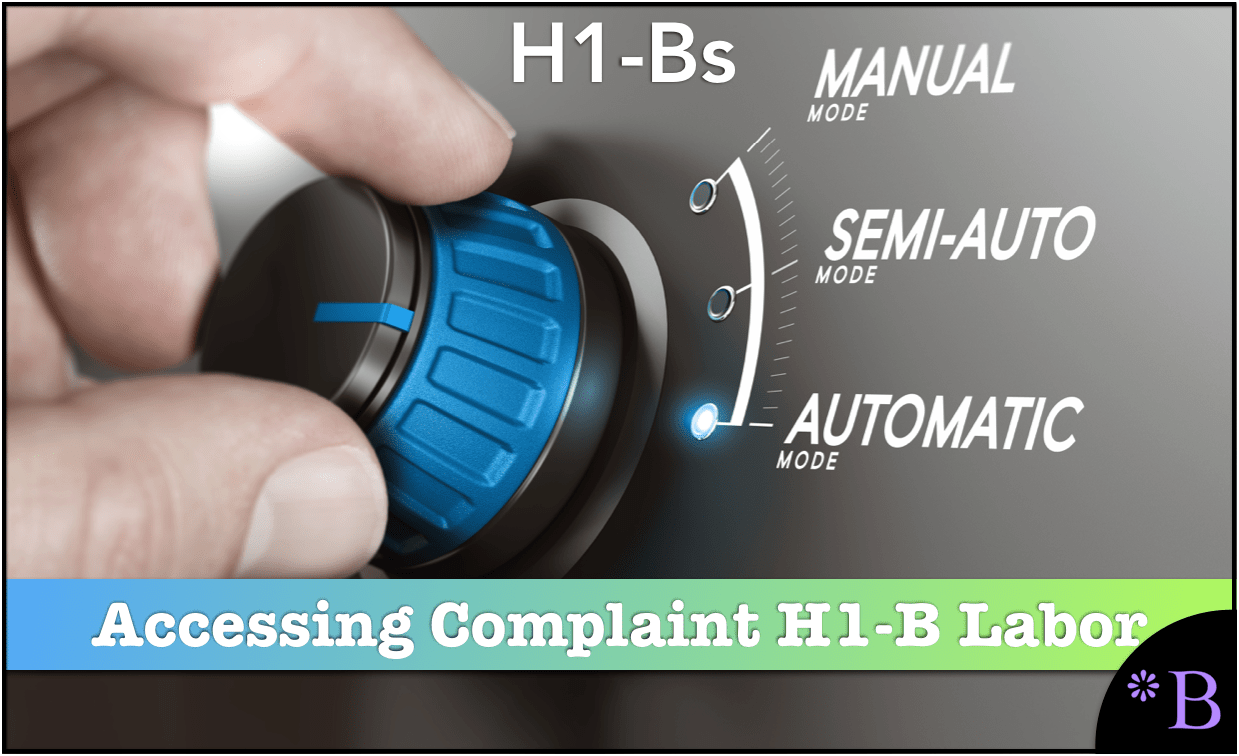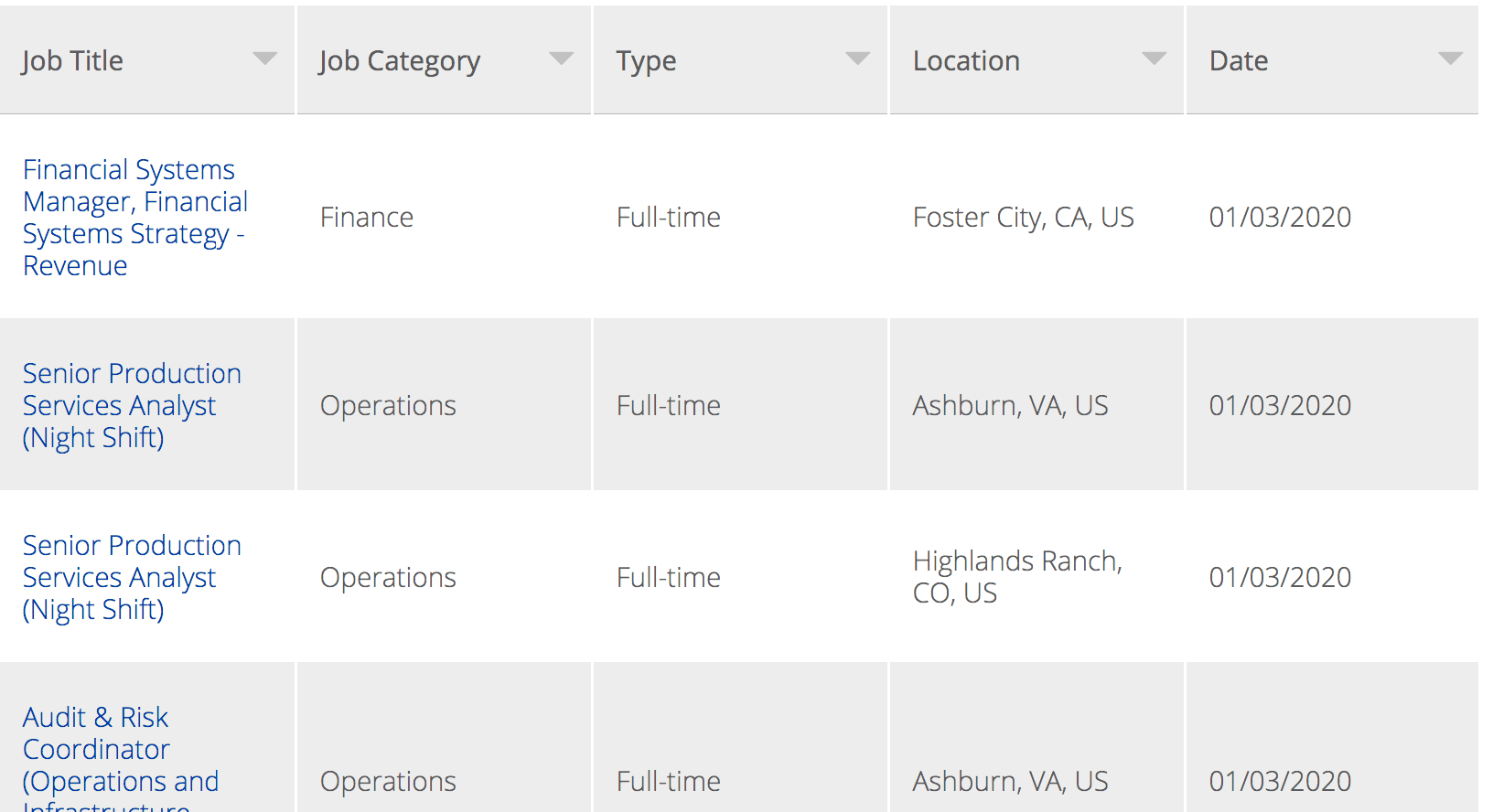How Indian Firms Are Viewed as Unlimited Sources for Compliant H1-B Labor
Executive Summary
- Indian firms’ speciality in the US economy is as a source of compliant H1-B labor.
- Companies are increasingly outsourcing to these labor exploitation H1-B mills.

Introduction
The H1-B program has become so corrupted and so massive that it is now something that Indian companies that function in the US have made their primary strategy around. There is no Indian company in the US that is not centered around the H1-B visa program. One example of this is found at the Visa career site.
This is the career site for Visa, the credit card company. https://usa.visa.com/careers.html

How many contractor jobs do you see?
Its a trick question: they take the form of requisitions that are broadcast to staffing vendors on their preferred list.
The word is from inside of Visa that about 1/2 of the employees as contractors from the Indian H1-B firms.
What Indian Firms Operating in the US Actually Do
Their primary strategy is displacing US workers and cutting labor costs. We are increasingly moving/have we moved, to a system that like Cisco the Indian firms are just seen as specialists in getting and managing Indian labor.
Take a look at the top recipients of H1-B visas in 2018.
- Tata
- Cognizant
- Infosys
- Wipro
- Accenture
- Tech Mahindra
- IBM
- Syntel
- Larson & Toubro
- HCL
Indian Firms: Specializing in Accessing and Exploiting H1-B Labor
So then big firms like Visa see the Indian firms like an unlimited tap for compliant H1-B labor. Nearly all of these companies are in the outsourcing business, where they offer to replace internal workers with their workers, who happen to be almost entirely Indian. As we cover in the article The Amazing Fact That 99.7% of Tata Consulting is Indian, these firms are based around Indians and precisely cheap H1-B Indian labor.
Dependent on H1-B Labor
If H1-B recipients don’t displace US domestic workers then why do many outsourcing firms claim that they require H1-B workers to engage in their business model.
The GAO, it should be noted, found that the lack of H1-B workers was not a significant factor for most companies deciding whether to move operations overseas.
The only exception was offshoring companies, some of which said their ability to provide IT servies to US customers depends in part on being able to hire H1-B workers. Of course, when these firms talk about “providing IT services” they often mean “offshoring IT jobs.” – Sold Out
Wait….it depends on H1-B workers? So they have to hire H1-B workers and not US citizens?
This is precisely what we have been proposing, that the H1-B program is now a business model for many companies.
How Much Indian Firms Drive Down Labor Wages
Labor Department data show that the annual average wage for a computer systems analyst is $91,990. By comparison, Professor Ron Hira reported that the average wage for an H1-B employee at Infosys in FY13 was $70,882 and $65,565 for Tata. Hira note, Actually that probably understates the wage gap. At Southern California Edison, IT specialists were earning an average annual base pay of $110,446 — meaning Tata and Infosys likely saved about $40,000 to $45,000 per worker per year. – Sold Out
This shows that companies that aggressively leverage the H1-B program are one of the primary enemies of US labor.
Conclusion
When companies want cheap H1-B labor to displace US workers, they know exactly who to contact, the Indian outsourcing firms. These firms help bring down US working standards to Indian levels. If anyone is interested in learning about what it is like to work in India, read our article How the Awful Indian Employment System Works.
References
*https://www.amazon.com/Sold-Out-Billionaires-Bipartisan-Crapweasels/dp/1501115944/